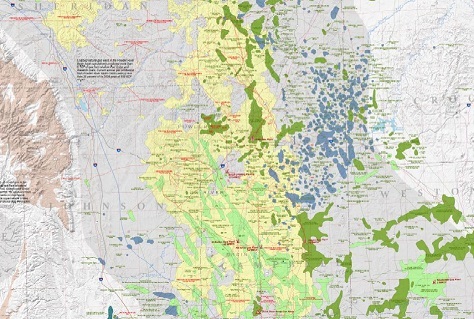NEWS RELEASE: Updated Oil and Gas Map of Wyoming now Available
Wyoming State Geological Survey sent this bulletin at 08/15/2016 08:55 AM MDT |
|
Having trouble viewing this email? View it as a Web page. |
August 15, 2016
******FOR IMMEDIATE RELEASE******
Media Contact:
Christina George
(307) 766-2286 x231
christina.george@wyo.gov

WSGS Publishes Updated Oil and Gas Map of Wyoming
Data about Wyoming’s oil and natural gas resources is depicted in an updated map published today by the Wyoming State Geological Survey (WSGS).
The 2016 Oil and Gas Map of Wyoming replaces the 2012 version through a collaboration between WSGS oil and gas scientists and geographic information systems (GIS) specialists.
“The map is designed to provide a general reference of Wyoming oil and gas activity through 2016,” says Rachel Toner, oil and gas geologist for the WSGS.
With Wyoming ranked fifth in natural gas production and eighth in oil production nationwide, the Oil and Gas Map of Wyoming is one of the WSGS’ most popular products and is used by industry, policy makers, researchers and the public. Because the paper map is a static snapshot of the oil and gas resources in the state, the WSGS in July launched a new interactive, online version of the map that can be updated more regularly as new information is acquired. The online map is proving to be just as popular as its print counterpart, with more than 400 users the first week it became available to the public.
“Although the Survey is moving away from paper maps and toward having them available electronically, there is still a demand for the printed version of the Wyoming Oil and Gas Map,” says Tom Drean, WSGS director. “Many tell us that they want the paper copy for a quick reference or as an office decoration.”
Information portrayed on the map about oil and gas fields includes their reservoirs and predominant reservoir ages, field status (abandoned, shut-in, undergoing enhanced oil recovery), production information and whether a field is used for disposal purposes. The map also shows pipelines provided by the Wyoming Pipeline Authority, oil refineries, gas processing plants and general geologic base layers.
Compared to the previous map version, geologists updated the field boundaries, field attributes and added new designations such as whether helium or carbon dioxide is produced from a field or used for Class I and Class V disposal (based on allowed waste injection). Oil- and gas-related facts for each basin were also updated.
The updates to the map data required extensive research into oil and gas wells, past Wyoming Geological Association field descriptions and field statuses and production. This data was incorporated into an ArcGIS model designed by the WSGS. The model automates the oil and gas field polygons and their attributes, a major difference from previous maps that used hand-drawn oil and gas field boundaries specific to the author.
Final steps in the project involved several rounds of cartographic editing to ensure proper label placement, symbology, reference documentation and map layout.
The map (series 103) is available to download free of charge, and printed copies are available for purchase via the WSGS Online Store. A shapefile of the 2016 field polygons is also available for download from the Survey website.

